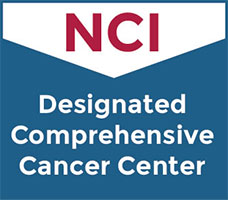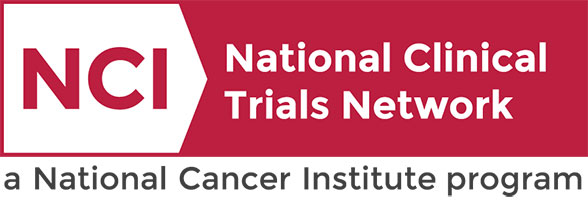Patient Search
 |
 |
|
KaCrole Higgins was diagnosed with breast cancer in 2020. “In May 2020, I found a lump in my breast. I cried. By June, it was diagnosed as breast cancer, triple positive, stage 1A. While getting this cancer diagnosis was devastating, it also became an opportunity. Suddenly, the cancer gave me clarity. It gave me clarity about what was important, what was good in my life, what was toxic in my life, and what I needed to do.” Click below to read more of KaCrole’s story |
If Landon Ryan had been diagnosed with bilateral retinoblastoma 10, 20 or 30 years ago, she might not be here today with nearly perfect vision.Thanks to recent improvements in the treatment for this rare form of cancer that almost exclusively affects children under the age of 5, the diagnosis had the power to change Landon’s life when she was 11 months old, but not to take it — or her eyesight. Click below to learn more about Landon and her story. https://momentum.vicc.org/2022/04/brighter-outlook/ |
Pharmacokinetics, Safety, and Efficacy of ASTX727 in Combination With Venetoclax in Acute Myeloid Leukemia (AML)
Multiple Cancer Types
The Phase 1 portion of this study is a single-arm, open-label, multicenter, non-randomized
interventional study to evaluate the pharmacokinetic (PK) interaction, safety, and efficacy
of ASTX727 when given in combination with venetoclax for the treatment of newly diagnosed
acute myeloid leukemia (AML) in adults who are age 75 years or older, or who have
comorbidities that preclude use of intensive induction chemotherapy. The primary purpose of
the study is to rule out drug-drug interactions between ASTX727 and venetoclax combination
therapy by evaluating area under the curve (AUC) and maximum plasma concentration (Cmax)
exposure. The Phase 2 portion of the study is to assess the efficacy of ASTX727 and
venetoclax when given in combination and to evaluate potential PK interactions. Phase 2 will
follow the same overall study design as Phase 1 and has two parts, Part A and Part B.
interventional study to evaluate the pharmacokinetic (PK) interaction, safety, and efficacy
of ASTX727 when given in combination with venetoclax for the treatment of newly diagnosed
acute myeloid leukemia (AML) in adults who are age 75 years or older, or who have
comorbidities that preclude use of intensive induction chemotherapy. The primary purpose of
the study is to rule out drug-drug interactions between ASTX727 and venetoclax combination
therapy by evaluating area under the curve (AUC) and maximum plasma concentration (Cmax)
exposure. The Phase 2 portion of the study is to assess the efficacy of ASTX727 and
venetoclax when given in combination and to evaluate potential PK interactions. Phase 2 will
follow the same overall study design as Phase 1 and has two parts, Part A and Part B.
Leukemia,
Phase I
I/II
Savona, Michael
NCT04657081
VICCHEMP20102
A Study of ELI-002 7P in Subjects With KRAS/NRAS Mutated Solid Tumors
Multiple Cancer Types
This is a Phase 1/2 study to assess the safety and efficacy of ELI-002 7P immunotherapy (a
lipid-conjugated immune-stimulatory oligonucleotide [Amph-CpG-7909] plus a mixture of
lipid-conjugated peptide-based antigens [Amph-Peptides 7P]) as adjuvant treatment in subjects
with solid tumors with mutated KRAS/NRAS. This study builds on the experience obtained with
related product ELI-002 2P, which was studied in protocol ELI-002-001 under IND 26909.
lipid-conjugated immune-stimulatory oligonucleotide [Amph-CpG-7909] plus a mixture of
lipid-conjugated peptide-based antigens [Amph-Peptides 7P]) as adjuvant treatment in subjects
with solid tumors with mutated KRAS/NRAS. This study builds on the experience obtained with
related product ELI-002 2P, which was studied in protocol ELI-002-001 under IND 26909.
Pancreatic,
Phase I
I/II
Cardin, Dana
NCT05726864
VICCPHI2249
Enasidenib for the Treatment of Relapsed or Refractory Acute Myeloid Leukemia Patients with an IDH2 Mutation
Multiple Cancer Types
This trial studies the side effects of enasidenib and to see how well it works in treating patients with acute myeloid leukemia that has come back after treatment (relapsed) or has been difficult to treat with chemotherapy (refractory). Patients must also have a specific genetic change, also called a mutation, in a protein called IDH2. Enasidenib may stop the growth of cancer cells by blocking the mutated IDH2 protein, which is needed for cell growth.
Pediatric Leukemia,
Pediatrics
II
Smith, Brianna
NCT04203316
COGADVL18P1
Open-Label Umbrella Study To Evaluate Safety And Efficacy Of Elacestrant In Various Combination In Patients With Metastatic Breast Cancer
Breast
Breast
This is a multicenter, Phase 1b/2 trial. The phase 1b part of the trial aims to determine the
RP2D of elacestrant when administered in combination with alpelisib, everolimus, palbociclib,
and ribociclib. The Phase 2 part of the trial will evaluate the efficacy and safety of the
various combinations in patients with ER+/HER2- advanced/metastatic breast cancer.
RP2D of elacestrant when administered in combination with alpelisib, everolimus, palbociclib,
and ribociclib. The Phase 2 part of the trial will evaluate the efficacy and safety of the
various combinations in patients with ER+/HER2- advanced/metastatic breast cancer.
Breast
I/II
Rexer, Brent
NCT05563220
VICC-DTBRE23166P
Testing the Addition of Daratumumab-Hyaluronidase to Enhance Therapeutic Effectiveness of Lenalidomide in Smoldering Multiple Myeloma, The DETER-SMM Trial
Multiple Myeloma
Multiple Myeloma
This phase III trial studies how well lenalidomide and dexamethasone works with or without daratumumab-hyaluronidase in treating patients with high-risk smoldering myeloma. Drugs used in chemotherapy, such as lenalidomide, work in different ways to stop the growth of tumor cells, either by killing the cells, by stopping them from dividing, or by stopping them from spreading. Anti-inflammatory drugs, such as dexamethasone lower the bodys immune response and are used with other drugs in the treatment of some types of cancer. Daratumumab-hyaluronidase is a monoclonal antibody, daratumumab, that may interfere with the ability of cancer cells to grow and spread, and hyaluronidase, which may help daratumumab work better by making cancer cells more sensitive to the drug. Giving lenalidomide and dexamethasone with daratumumab-hyaluronidase may work better in treating patients with smoldering myeloma.
Multiple Myeloma
III
Baljevic, Muhamed
NCT03937635
ECOGPCLEAA173
Rituximab with or without Stem Cell Transplant in Treating Patients with Minimal Residual Disease-Negative Mantle Cell Lymphoma in First Complete Remission
Lymphoma
Lymphoma
This phase III trial studies rituximab after stem cell transplant and to see how well it works compared with rituximab alone in treating patients with in minimal residual disease-negative mantle cell lymphoma in first complete remission. Immunotherapy with rituximab, may induce changes in bodys immune system and may interfere with the ability of tumor cells to grow and spread. Giving chemotherapy before a stem cell transplant helps kill any cancer cells that are in the body and helps make room in the patients bone marrow for new blood-forming cells (stem cells) to grow. After treatment, stem cells are collected from the patient's blood and stored. More chemotherapy is then given to prepare the bone marrow for the stem cell transplant. The stem cells are then returned to the patient to replace the blood-forming cells that were destroyed by the chemotherapy. Giving rituximab with or without stem cell transplant may work better in treating patients with mantle cell lymphoma.
Lymphoma
III
Dholaria, Bhagirathbhai
NCT03267433
ECOGCTTEA4151
Comparison of Chemotherapy before and after Surgery versus after Surgery Alone for the Treatment of Gallbladder Cancer, OPT-IN Trial
Gastrointestinal
Gastrointestinal
This phase II/III trial compares the effect of adding chemotherapy before and after surgery versus after surgery alone (usual treatment) in treating patients with stage II-III gallbladder cancer. Chemotherapy drugs, such as gemcitabine and cisplatin, work in different ways to stop the growth of tumor cells, either by killing the cells, by stopping them from dividing, or by stopping them from spreading. Giving chemotherapy before surgery may make the tumor smaller; therefore, may reduce the extent of surgery. Additionally, it may make it easier for the surgeon to distinguish between normal and cancerous tissue. Giving chemotherapy after surgery may kill any remaining tumor cells. This study will determine whether giving chemotherapy before surgery increases the length of time before the cancer may return and whether it will increase a patients life span compared to the usual approach.
Gastrointestinal
II/III
Heumann, Thatcher
NCT04559139
ECOGGIEA2197
Testing the Addition of Pembrolizumab, an Immunotherapy Cancer Drug to Olaparib Alone as Therapy for Patients with Pancreatic Cancer That Has Spread with Inherited BRCA Mutations
Pancreatic
Pancreatic
This phase II trial studies whether adding pembrolizumab to olaparib (standard of care) works better than olaparib alone in treating patients with pancreatic cancer with germline BRCA1 or BRCA2 mutations that has spread to other places in the body (metastatic). BRCA1 and BRCA2 are human genes that produce tumor suppressor proteins. These proteins help repair damaged deoxyribonucleic acid (DNA) and, therefore, play a role in ensuring the stability of each cells genetic material. When either of these genes is mutated, or altered, such that its protein product is not made or does not function correctly, DNA damage may not be repaired properly. As a result, cells are more likely to develop additional genetic alterations that can lead to some types of cancer, including pancreatic cancer. Immunotherapy with monoclonal antibodies, such as pembrolizumab, may help the body's immune system attack the cancer, and may interfere with the ability of tumor cells to grow and spread. Olaparib is an inhibitor of PARP, a protein that helps repair damaged DNA. Blocking PARP may help keep tumor cells from repairing their damaged DNA, causing them to die. PARP inhibitors are a type of targeted therapy. The addition of pembrolizumab to the usual treatment of olaparib may help to shrink tumors in patients with metastatic pancreatic cancer with BRCA1 or BRCA2 mutations.
Pancreatic
II
Cardin, Dana
NCT04548752
SWOGGIS2001
Testing the Addition of Nivolumab to Standard Treatment for Patients with Metastatic or Unresectable Colorectal Cancer that have a BRAF Mutation
Multiple Cancer Types
This phase II trial tests whether adding nivolumab to the usual treatment (encorafenib and cetuximab) works better than the usual treatment alone to shrink tumors in patients with colorectal cancer that has spread to other places in the body (metastatic) or that cannot be removed by surgery (unresectable) and whose tumor has a mutation in a gene called BRAF. Encorafenib is in a class of medications called kinase inhibitors. It is used in patients whose cancer has a certain mutation (change) in the BRAF gene. It works by blocking the action of mutated BRAF that signals cancer cells to multiply. This helps to stop or slow the spread of cancer cells. Cetuximab is in a class of medications called monoclonal antibodies. It binds to a protein called EGFR, which is found on some types of cancer cells. This may help keep cancer cells from growing. Immunotherapy with monoclonal antibodies, such as nivolumab, may help the body's immune system attack the cancer, and may interfere with the ability of tumor cells to grow and spread. Giving nivolumab in combination with encorafenib and cetuximab may be more effective than encorafenib and cetuximab alone at stopping tumor growth and spreading in patients with metastatic or unresectable BRAF-mutant colorectal cancer.
Colon,
Rectal
II
Eng, Cathy
NCT05308446
SWOGGIS2107
Active Surveillance, Bleomycin, Etoposide, Carboplatin or Cisplatin in Treating Pediatric and Adult Patients with Germ Cell Tumors
Multiple Cancer Types
This phase III trial studies how well active surveillance help doctors to monitor subjects with low risk germ cell tumors for recurrence after their tumor is removed. When the germ cell tumors has spread outside of the organ in which it developed, it is considered metastatic. Drugs used in chemotherapy, such as bleomycin, carboplatin, etoposide, and cisplatin, work in different ways to stop the growth of tumor cells, either by killing the cells, by stopping them from dividing, or by stopping them from spreading. The trial studies whether carboplatin or cisplatin is the preferred chemotherapy to use in treating metastatic standard risk germ cell tumors.
Germ Cell (Pediatrics),
Gynecologic,
Ovarian
III
Borinstein, Scott
NCT03067181
COGAGCT1531



